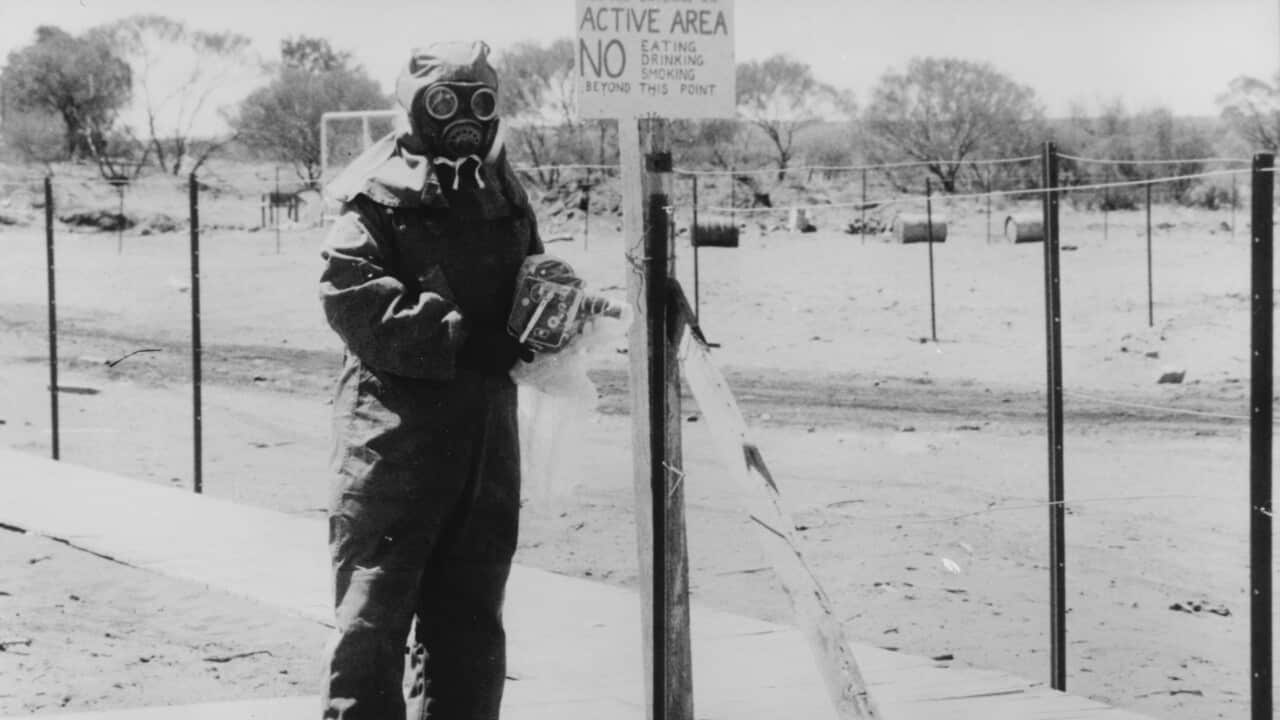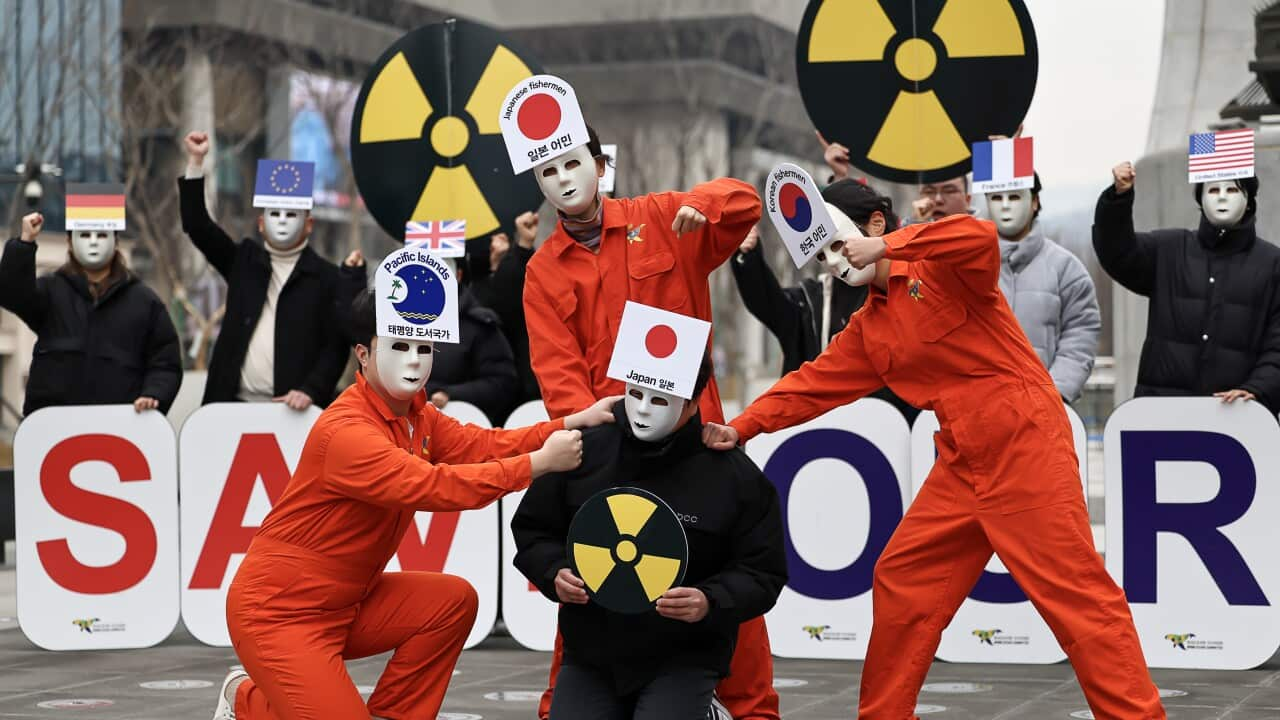Indigenous Elders are warning that their communities' connections to sacred sites may be severed by nuclear power plants proposed by the Opposition.
Opposition leader Peter Dutton seven sites where the Coalition would seek to build nuclear power plants if elected.

Peter Dutton's proposed locations for nuclear power plants. Source: SBS News / SBS
According to Smith, the proposal is a "death sentence to the land".
Also responding to Dutton's proposal, the Queensland Conservation Council's Paul Spearim said: "White Australia has a shortsighted approach to Country".
"You have forced poison onto the lands of Traditional Owners, and now Peter Dutton is proposing to create poisons that would last [hundreds of thousands] of years," Spearim said.
First Nations and nuclear: A troubled history
Indigenous Australians' fears about nuclear technology threatening their land and livelihoods are not occurring in a vacuum.
During the 1950s and 1960s,
Keen to develop nuclear weapons of its own during the Cold War, the British government decided the remoteness of Maralinga and Emu Field made them ideal sites for nuclear weapon testing.
With agreement from the Australian government, the people living on Maralinga Tjarutja lands were relocated and told they could not return to their land. Many were rounded up and relocated to the Lutheran mission in Yalata, around 200km away.

A sign at Britain's former nuclear test site in Maralinga, South Australia, warns about items with low levels of radioactive contamination in the area. Credit: AP
Indigenous people living in and around the area, as well as British and Australian soldiers, were all exposed to radiation.
In the wake of the tests, there were many reports of cancer, blood diseases, eye problems, skin rashes, blindness, and vomiting — all of which are symptoms of radioactive poisoning.
It was not until 2009 that the land used for weapons testing was handed back to Traditional Owners.

Demonstrators walk to the Tennant Creek courthouse to protest plans for a nuclear waste dump at Muckaty Station. Source: AAP / AAP
The plan, which never went ahead, was to build a bunker facility to store intermediate and low-level radioactive waste.
The dispute ended in a
Are nuclear weapons and nuclear power the same thing?
While nuclear power plants don't have the same immediate environmental impacts as nuclear weapons testing, there are still concerns.
Environmental advocates say the plan will delay an urgently needed shift away from fossil fuels, with Climate Council CEO Amanda McKenzie calling it a commitment to coal and gas.
Nuclear power creates radioactive waste material such as uranium mill tailings and spent reactor fuel.
Dutton says the nuclear waste generated would be stored on site and then at the end of the life of that asset "moved to a permanent home."
Anti-nuclear proponents point out several high-profile accidents at nuclear power plants.
Most notable was the 1986 explosion at Chernobyl nuclear power plant in Ukraine, which had major impacts on both agricultural and natural ecosystems in Belarus, Russia, Ukraine and several other European countries.
More recently, Japan's government sparked protests after approving the release of one million tonnes of lightly contaminated water into the Pacific Ocean after an earthquake in 2011 caused a major accident at the Fukushima power plant.
However, the International Atomic Energy Agency says nuclear power plants are .
What has the response to Dutton's nuclear proposal been?
The Coalition's plan has been met with widespread doubt about costings and feasibility, with state premiers vowing to block the proposed projects in their jurisdictions.
A report from the CSIRO has found it could cost as much as $17 billion and take more than 15 years to build a single nuclear power plant in Australia — and electricity from nuclear power could be at least 50 per cent more expensive than solar and wind.
An has also found that two in three Australians are not prepared to pay any extra to have nuclear power in their energy mix.
Dutton says Australians will be pleasantly surprised when the project costs are finally revealed, and says he's unconcerned by the rejections from state leaders.
"We'll work with them well in government, but in the end, the Commonwealth legislation overrides the state legislation, so it's a moot point," Dutton said.



